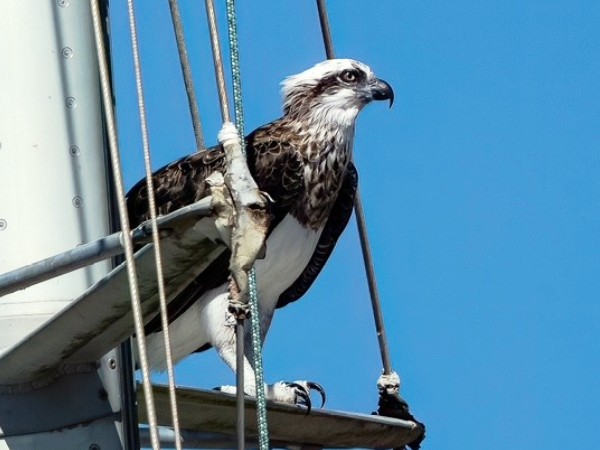Ospreys are raptors, large birds of prey, with a 1.8m wingspan.
They are also known as the river hawk, fish hawk, or sea hawk, typically living as long as 15 to 20 years.
Ospreys usually mate for life during winter (June–Aug) in SEQ.
They live near water and are unique among raptors for their almost exclusively live fish diet.
The osprey flies up to 40 metres in the air and dives, typically feet first, into shallow water to capture its prey. Its nostrils close during dives.
The osprey and owls are the only raptors whose outer toe is reversible.

It can be angled backward allowing them to grasp their prey with two toes in front and two behind-particularly helpful with slippery fish. Their unique talons with backward facing scales that act as barbs, allow them to rearrange their catch so that it faces forward as they carry it to their nest.
As an osprey dives it adjusts the angle of its flight to account for the distortion of the fish’s image caused by refraction.
It is a unique species, with its own genus (Pandion) and family (Pandionidae), going back 11 million years. Courting males perform an aerial display known as the “sky-dance.” During the dance, the male brings food or materials for the nest while hovering, wobbling in flight, and making a screaming sound to attract a female. Before mating, the male delivers food to his partner, and continues the feeding ritual until the young offspring are ready to fledge.
How fortunate are we to have our Ospreys year round


